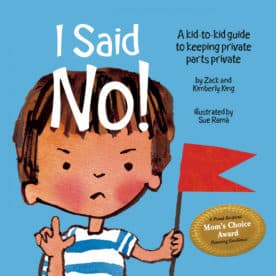Raising children is probably one of the most difficult tasks you will ever encounter. Even if you don’t have children of your own, you most likely have a friend or family member who does. Of course, you want what is best for them, and reading children’s books is fundamental!
However, beyond the magical unicorns and best friends books, you really want to educate your children about mental health. From ADHD and autism to bullies and trauma, there are a number of helpful children’s books that can assist you in teaching your kids about their emotions and so much more.

This book helps children to understand body safety.
1. I Said No! A Kid-to-Kid Guide to Keeping Private Parts Private
If you have children or there are children in your life that are important to you, you are probably concerned about body safety. You can’t always be around to protect them from predators, so they have to develop skills to protect their own bodies.
I Said No! takes a kid-friendly approach to developing appropriate boundaries and body-safety awareness. It was written by a little boy and his mom following a real-life situation. Without dumbing down the issues involved, it uses non-icky language to help address the issues at stake.
